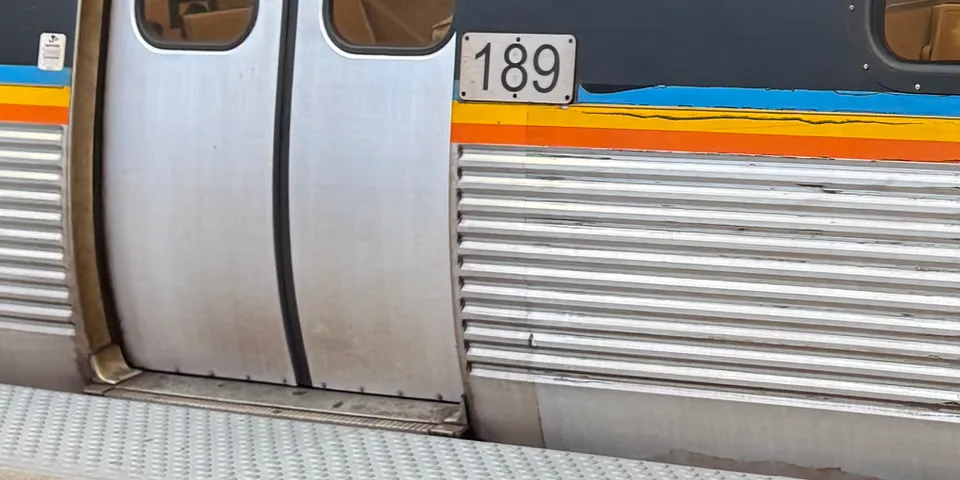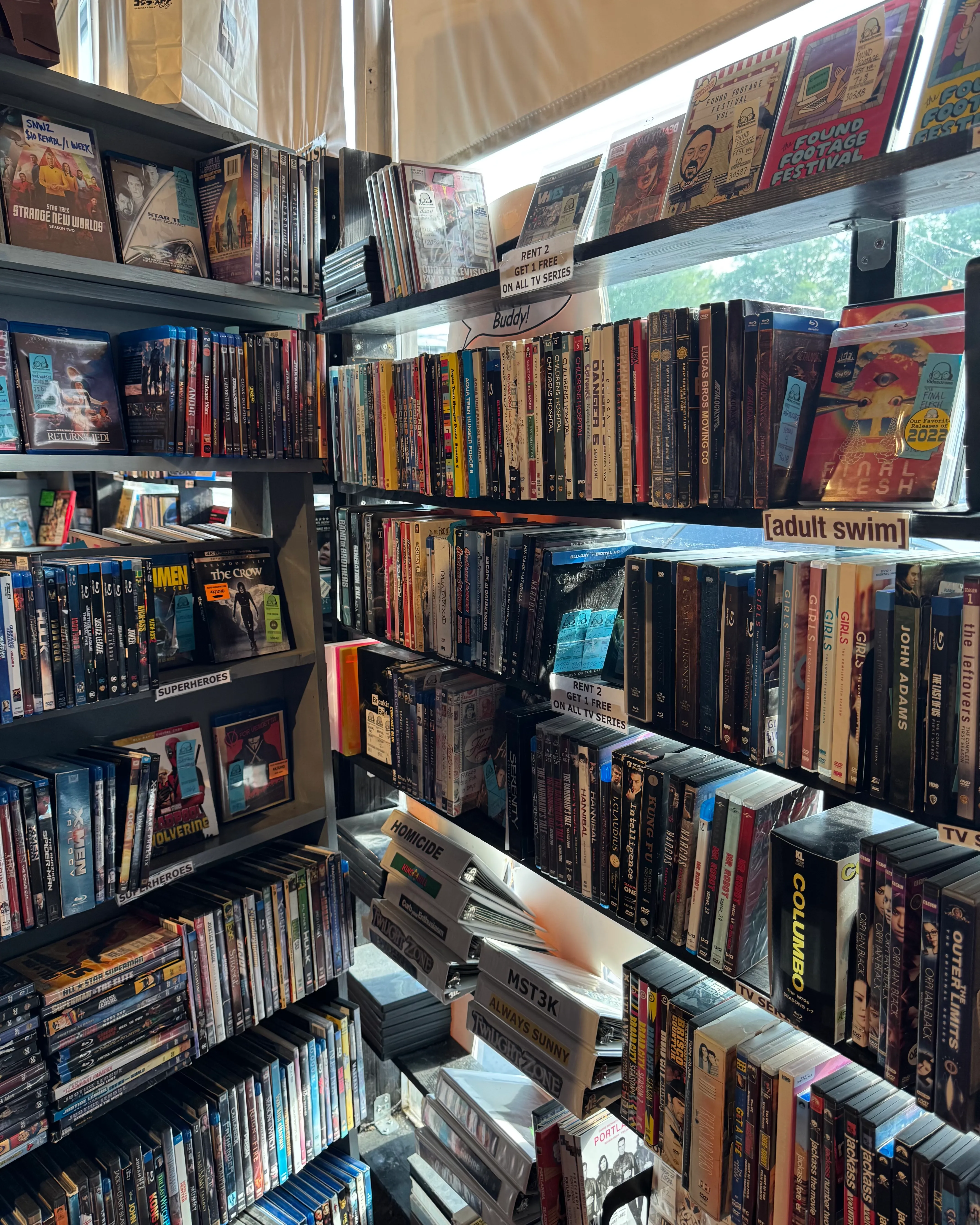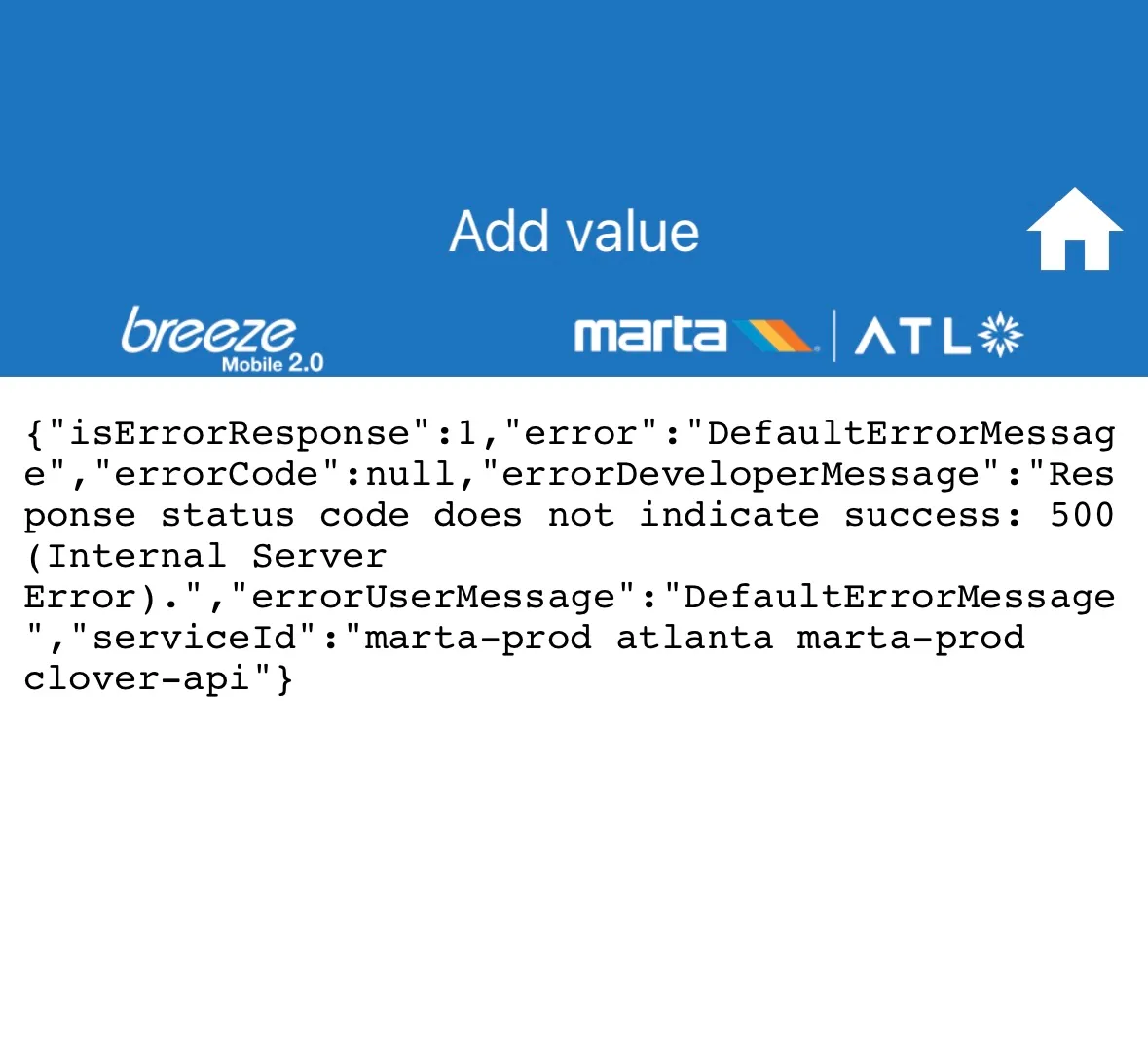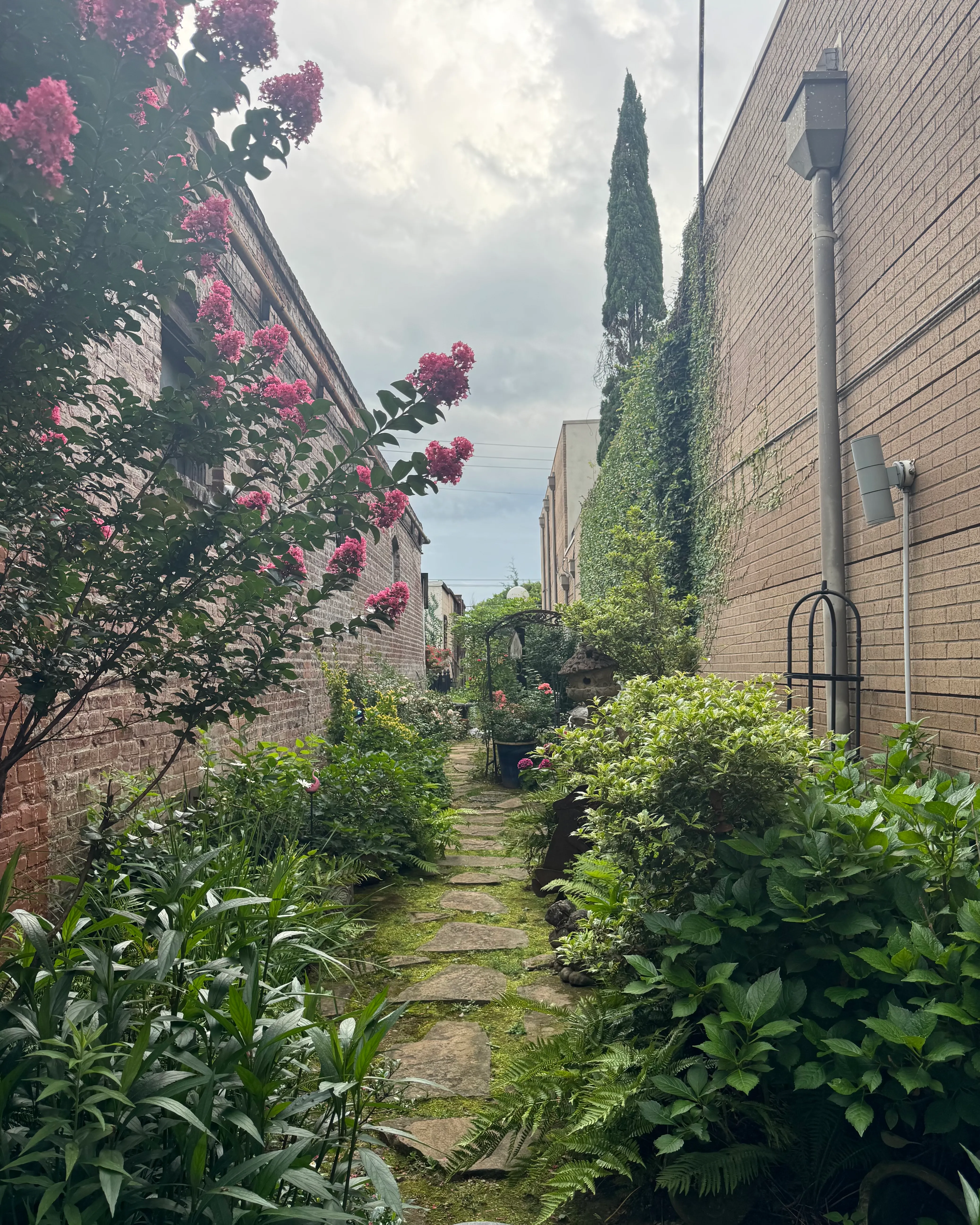
Who is technology for?
This week Alan and I took a mini staycation in Downtown Atlanta for RenderATL.
This was my fourth year attending the tech conference and Alan’s first time.
I knew I wouldn’t want to fuss with commuting back and forth to Marietta during the event, so we left the pup with my parents and booked two nights at the host hotel.
I hoped a couple of days in the city, immersed in the culture, reconnecting with the community, would recharge my batteries and restore my energy for the industry.
But I came home with more questions than clarity, asking myself:
Would I recommend a career in tech to any new grad today?
Can AI change our work for the better?
Who gets to benefit from technological advancement?
And what is the point of all this advancement if we can’t improve quality of life in the communities where we live?
✤
On Wednesday we’re running late and we don’t have time to check-in at the hotel before badge pickup closes. We order a Lyft and get dropped off at AmericasMart with our luggage in tow.
My tote bag is overstuffed with two laptops, a pair of cowgirl boots, and an entire watercolor set. Alan is wearing his travel backpack.
I’m grateful my badge doesn’t have any company name printed on it this year, just my name and initials, “MC.” Alan uses a Sharpie to cross “Mailchimp” off his.
As we start hiking up Williams Street toward The Candler, we walk past the Switchyards building.
“Atlanta isn’t perfect.” The rest of the words to complete the thought are on the second panel of a mural obscured behind a metal gate.
After we jaywalk across Peachtree, we find heavy doors that open on a button welcoming us into a cold marble lobby. The sweet relief of air conditioning.
Justin Samuels is directing people upstairs to a champagne reception on the 2nd floor. Kelly Vaughn is dressed in pink and holding the elevator for us.
We fumble with our key cards and don’t hit the buttons in time, so we have to ride it all the way up and back down again.
✤
Some old work friends know we’re in town and they’ve graciously invited us to join them for dinner at a wine bar in Poncey-Highlands.
Traffic is light so we get out there early and wander around Videodrome. I think about how logical it is to organize films by directors and how the genre categories on the walls here make way more sense than any of the groupings on the apps.
Plus: there’s no auto-play where video trailers scream noise at you while you’re browsing.
 Rent two, get one free.
Rent two, get one free.
✤
The next morning I have work I need to knock out before we head to the talks. I’ve botched an assignment with a hard deadline and I need to re-do it.
I’m bouncing between Google Gemini and ChatGPT searching for trustworthy articles with stats or charts that match up with the narrative for a presentation.
“Can you point me to the original source for this stat?”
I end up on the WSJ but I can’t connect anything in the article to the bullet point from the AI response.
I think about all the work I did writing papers in school. How it felt to have a stack of books on a table. What the libraries smelled like.
If I was short on research and still working after library hours, I’d drive out to Barnes & Noble. I’d copy down quotes into my spiral notebook and put the books back on the shelves.
Now I feel like the professor, disappointed with a student who’s neglected their citations.
✤
Once we make it over to the conference venue, RenderATL is everything I’ve promised Alan it would be.
People are decked out in rhinestone Western wear like it’s a Cowboy Carter concert. The Exhibit Hall is crowded with glowing booths from all the big tech sponsors. We do a lap to wave “good morning” and hug a few friends.
I try not to feel too unsettled by the robotic quadruped with a cartoon puppy face that’s crawling under people’s feet.
This year the Main Stage is in a more understated space upstairs. The room is packed out for welcome remarks and Kelsey Hightower’s keynote.
THIS is why we’re here.
Justin’s welcome is practiced and thoughtful. Kelsey’s keynote is grounding and aspirational. Per usual, he’s casually dropping these powerful little soundbites into his storytelling. The one that sticks with me is:
We’re going to spend 1 trillion dollars training the models and we can’t feed kids at school.
The next panel is a discussion about remote-first work culture with four people leaders at Zillow. The suits loosen up a bit with each scripted question, and the bit about their “Cloud HQ” is totally landing.
Traffic in the sprawling Metro Atlanta Area is notoriously broken by design, and nobody local in the audience has any interest in RTO. If Zillow is recruiting, they picked the right conference to sponsor.
✤
For lunch we walk over to Ted’s with a friend of Alan’s who’s running for Congress in the 5th district. We meet his wife and his sister. We talk about art and real estate and their weekend plans to set up a chicken coop in their backyard.
We learn that the local political party has practically no technical infrastructure for organizing or communication—not even a Slack instance. One of their goals is to open-source the entire process of campaigning so nobody has to start from scratch.
I’m in awe of how much their campaign has put together on their own and I’m annoyed thinking about all the missed opportunities for efficiencies and scale before now.
✤
After Day One wraps, I have reservations booked at Kitty Dare. It’s a well-reviewed Mediterranean restaurant just steps away from the Inman Park MARTA station.
Before leaving the hotel, we download the app suspiciously named Breeze Mobile 2.0. I want to attach my Apple Pay but I can’t figure out how. I try to pre-load some money for a fare with my AmEx but I get an Internal Server 500 error. I click Help to email the error to support and decide we should leave with plenty of time to sort things out at the station.
 This doesn’t look promising.
This doesn’t look promising.
The Five Points MARTA station is a mere 8 minute walk from the hotel. It’s hot and muggy outside. Everything smells like sour trash heating up in an Easy-bake Oven. The fountains are dry in the park.
We make our way down Broad Street. The boardwalk is crowded and the restaurants look closed. I try to remember which building is the one where the old Mammal Gallery used to be. A man who is holding the hands of two children stops to take a tourist photo.
When we get to the station it’s surrounded by barricades and we’re not 100% sure it’s operating.
We turn a corner and the entrance is open! Naively, we wave our iPhones over the circle-shaped Breeze pads at the gates, vaguely hoping the Apple Pay works like it does in Manhattan. It does not.
At this point, we’ve both given up on the app so we decide to purchase hard paper Breeze cards. Old school.
But I have to try three separate times to get the machine to read my card. Alan’s first attempt to buy a ticket goes so poorly, the machine prints out a hard error code on a receipt.
While I’m waiting on Alan to figure out his ticket, I check Google Maps and realize it’s recommending the line (Blue or Green) but there’s no guidance for whether we need to head East or West.
The highlight of this whole situation is a friendly gate attendant who’s kind and encouraging.
“Sir, do you know whether Inman Park is Eastbound or Westbound from here?” It’s Eastbound.
When we get down to the platform, the TV monitors—which I can only guess would typically show departure schedules—seem to display an error in a terminal window instead.
In a few minutes we’re comfortably seated in a magical beige cart, flying over the city, past stacks of shipping containers parked in the train yard that runs along Dekalb Avenue.
As we arrive safely at our destination, Alan gets an alert on his phone. The $20 credit he tried to add to his account before we left the station has processed successfully, only 20 minutes too late.
 A small garden behind the restaurant in Inman Park.
A small garden behind the restaurant in Inman Park.
✤
“It’s like we’re all working on the wrong things.”
It’s Saturday, we’re back at home, pounding Modelos in a booth at La Cubana after standing out in the sun and rain all afternoon.
Working in tech has changed our lives for the better, for sure. Our careers. Our house. The money we have saved for retirement. The money we’re about to spend on this next round of beers…
But it feels like the benefits of technology are concentrated and diminishing. It’s not reaching all the corners where it could have an outsized positive impact.
We don’t need another new CMS or AI-native versions of every B2B SaaS app that got built in the last decade. We don’t need more ways to gamble money on sports, or liquid glass icons for the iPhone.
We need working infrastructure, better architecture, art and education. Clean water and safe food. Housing, healthcare, and resources for mental health. Support and systems for people in crisis. Human rights, dignity, and hope for the future.
Right now, some brilliant designer is working on their 16th version of a tool-tip carousel to drag people through the nonsense navigation of an over-engineered web app while a CEO declares we no longer need UX research because “AI makes everything usable.”
Everything is broken and the best minds across the globe are busy trying to fit their new toys up against problems that don’t exist.
It’s all such a feckless waste.
Would I recommend a career in tech for a new grad who wants to change their life?
Yes. AI is disrupting the industry but opportunity is still out there. Go get it.
Play with AI and automation in your workflows but don’t forget the trade-offs you’re making when you outsource your research. Pause and verify often.*
Never forget: technology is yours. It belongs to you and it works for you, not the other way around.
My wish for everybody in our industry—from interns to Distinguished Engineers—is that we won’t waste all of our energy and talent solving for nothing, reaching up for rungs on ladders that lead to nowhere.
We get to decide which problems deserve our brilliance and what worlds we want to build.
*I asked ChatGPT for the full text on the inside corner of the wall that completes the famous “Atlanta isn’t perfect” mural at the Switchyards Downtown.
ChatGPT “thought” for 9 seconds, decided it couldn’t get the real answer, and then made something up. Despite having a link to the artist’s website where the full text is clearly legible in an image.